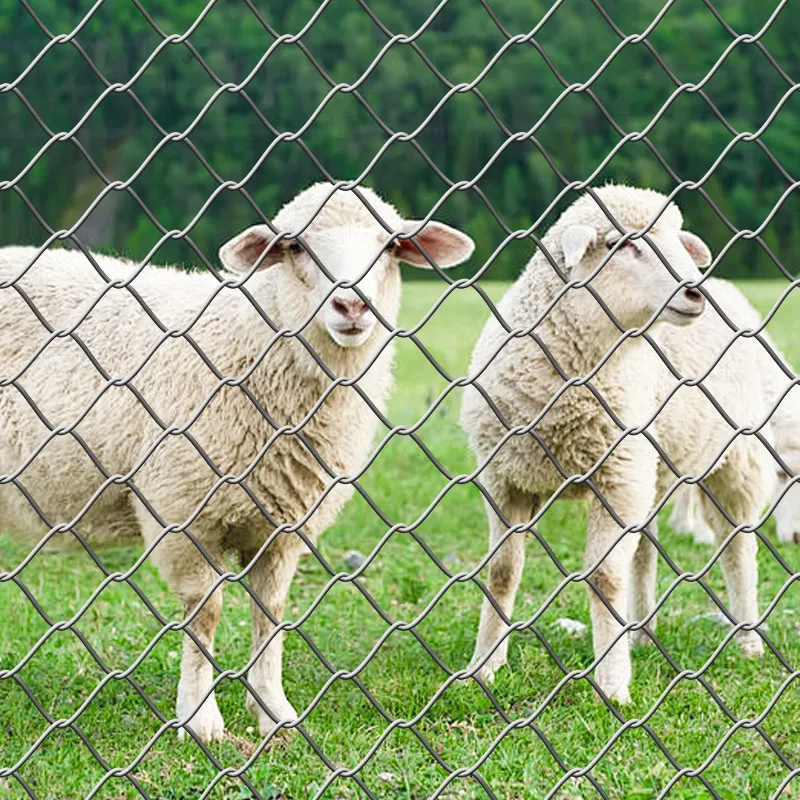 TEL:
+86-13102802206
TEL:
+86-13102802206
 Email:
fencenetting@china.com
Email:
fencenetting@china.com
 Language
Language
 TEL:
+86-13102802206
TEL:
+86-13102802206
 Email:
fencenetting@china.com
Email:
fencenetting@china.com
 Language
Language


The Significance of Sheep Netting in Modern Agriculture
In the ever-evolving landscape of modern agriculture, one often overlooked yet vital component is sheep netting. This simple yet effective tool plays a crucial role in the management and protection of sheep, making it an indispensable asset for farmers and shepherds alike.
Sheep netting refers to a type of fencing designed specifically for containing sheep and protecting them from various threats, including predators and harsh weather conditions. Traditionally made from woven wire or plastic, sheep netting provides a flexible and durable solution to the various challenges faced in sheep farming. Its design allows for easier installation and removal compared to traditional fencing, making it an ideal choice for both permanent and temporary enclosures.
One of the primary benefits of sheep netting is its effectiveness in keeping sheep safe from predators. In many regions, farmers face the constant threat of wild animals such as coyotes, foxes, and even birds of prey targeting their livestock. A well-constructed sheep netting system creates a physical barrier that deters these predators, ensuring the safety of the flock. Moreover, the visibility provided by the netting allows farmers to keep a close eye on their sheep, helping to quickly identify any potential issues.
In addition to predator protection, sheep netting also plays a fundamental role in managing grazing patterns. Farmers often need to control where their sheep graze to prevent overgrazing and to promote healthy pasture growth. By using mobile sheep netting, farmers can create temporary enclosures that allow for rotational grazing. This method not only helps maintain the health of the pasture but also encourages natural behavior in sheep, allowing them to roam and graze in a more controlled environment.

Weather protection is another significant advantage of sheep netting. During harsh weather conditions, such as heavy rain, snow, or extreme heat, sheep can suffer from stress and health issues. By utilizing netting to create sheltered spaces, farmers can protect their livestock from the elements while giving them access to fresh grass and clean water. Such care is vital for maintaining the health and productivity of the flock.
Moreover, sheep netting contributes to biosecurity efforts by isolating different groups of sheep. Farmers often need to manage breeding, vaccinations, and health checks. By using netting to separate various groups, farmers can minimize the risk of disease transmission and ensure that their sheep remain healthy. This aspect of netting is particularly important in larger operations where biosecurity is a primary concern.
Sustainability is a growing trend in agriculture, and sheep netting aligns perfectly with these principles. By promoting rotational grazing and helping to maintain healthier pastures, sheep netting contributes to an ecosystem that supports the balance of animal husbandry and environmental stewardship. Healthier soils, reduced erosion, and improved biodiversity are just a few of the benefits that arise from proper grazing management enabled by effective netting systems.
In today's agricultural landscape, advancements in technology have led to innovations in sheep netting materials and designs. Lightweight, portable options now feature solar-powered electric fencing technology, allowing for greater flexibility in managing the flock. Farmers can easily move and adjust their fencing as conditions change or as they implement new grazing strategies.
To sum up, sheep netting is an essential tool that goes beyond mere containment. Its role in ensuring the safety of livestock, managing grazing, providing weather protection, and maintaining biosecurity cannot be understated. Furthermore, as sustainability becomes increasingly vital in agriculture, practices involving sheep netting contribute to healthier ecosystems and responsible farming. As farmers continue to adapt to the challenges of the modern agricultural landscape, sheep netting will undoubtedly remain a fundamental component of effective livestock management, safeguarding the sheep that have been integral to human survival for millennia.